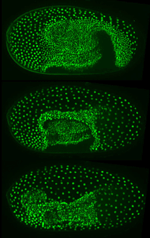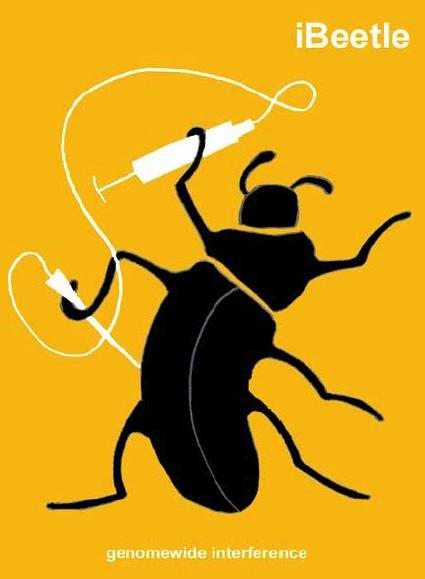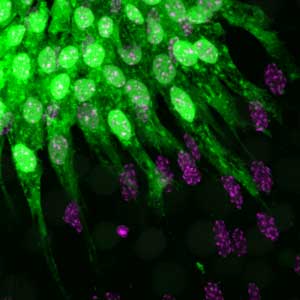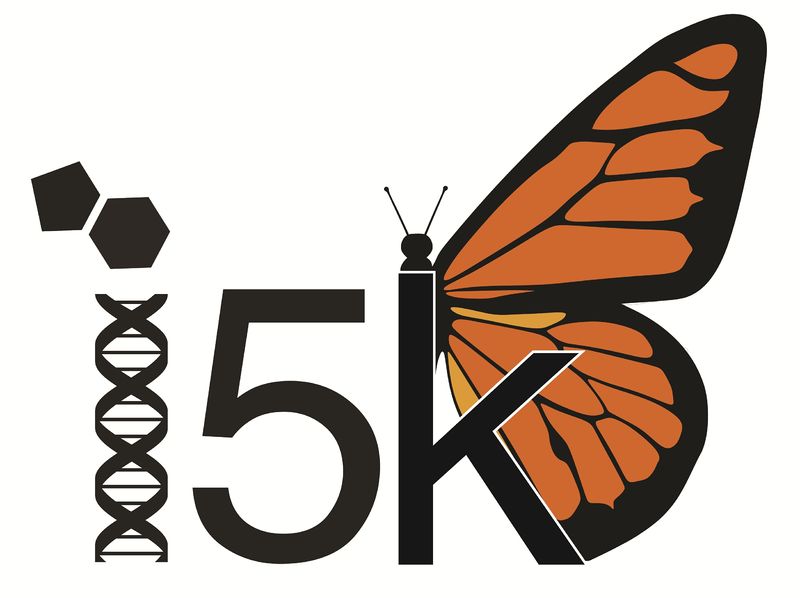| |
 |
| |
University of Cologne >
Biology Department >
Dev. Biol. Institute >
Panfilio Lab >
Research
Group Members
Publications
Lab News
Teaching
|
| |
Extraembryonic research |
Morphogenesis ~ Molecular regulation ~ Macroevolution ~ Genomics |
| |
Extraembryonic development (EED) is an essential and unique, but little-studied, aspect of insect development. The insect extraembryonic tissues are evolutionarily distinct from yet analogous to the chorioamniotic protective tissues of amniote vertebrates, including humans. The insect tissues are very dynamic during development, and we investigate how they achieve the correct three-dimensional form and topography in relation to the embryo proper, and how this is coordinated over time as a succession of rearrangements occur. High resolution live imaging and genetic perturbation experiments allow us to use this model of animal tissue development to understand how extraembryonic cellular remodeling and tissue integrity promote survival.
By taking a comparative approach across species, we also examine the degree to which EED has been conserved, or not, during insect evolution. Here, bioinformatic approaches that examine gene expression levels, gene regulation, and genomics data complement our microscopy work.
Our overall aim is to generate an integrated view of the organism, including how processes on developmental and evolutionary time scales have shaped its form. Below is an overview of some of the projects we are currently working on.
| ![]()  ![]()
![]()  |
|
| |
Morphogenetic and molecular analyses of candidate EE genes
|
In the insects, the extraembryonic tissue within the egg has evolved into the two distinct epithelial membranes known as the serosa and the amnion. Playing distinct roles, the two membranes first develop to fully enclose and protect the embryo, and later actively withdraw so as to leave the embryo free to complete development. Extraembryonic development (EED) was well-known and examined during the time of classical, comparative embryological studies of the 1880's to 1970's. However, we know remarkably little about the morphogenetic details or molecular underpinnings of EED, as the modern era's model system, the fruit fly Drosophila, has a secondarily reduced EED program. For comparative study, we focus on two insects that represent the two main modes of EED, the milkweed bug, Oncopeltus fasciatus, and the red flour beetle, Tribolium castaneum. Both species are considered "emerging" model systems, which are amenable to experimental techniques such as RNA interference (RNAi).
For the handful of genes that we know to be involved in EED, we are analyzing their function(s) in detail in both species. On the one hand, we are learning more about the diverse and ancestral roles of these genes and their regulatory networks. At the same time, we are using RNAi for these genes as a reverse genetics tool for functionally dissecting the components of the serosa's and amnion's developmental programs. Our phenotypic analyses make use of diverse microscopy techniques for visualizing gene expression, tissue structure, and time-lapse live imaging of morphogenesis.
 Movies from some of the lab's recent work on early and late Tribolium development Movies from some of the lab's recent work on early and late Tribolium development
| ![]()  |
|
| |
RNAi screen for new EE genes
|
By taking a candidate gene approach, we are already investigating a number of genes that are proving to be important regulators of EED. However, as the model system fruit fly Drosophila melanogaster has a very reduced form of EED, a fly-centric list of candidates clearly only scratches the surface. To identify new genes that are essential for EED, we are participating in a large, unbiased RNAi screen in Tribolium, an initiative known as iBeetle. The several labs in Germany that are involved in this research unit are screening for a wide array of phenotypes, including those that could suggest a gene's involvement in EED. As an associated lab, we are performing rescreening validation of potential genes of interest. We also do more in-depth, live imaging analyses of interesting phenotypes for our selected candidates and, in collaboration, for mutually interesting candidates being pursued by the other participating labs. The ongoing screen has already surveyed nearly half of the genome, turning up dozens of potential EE genes that could not have been identified by other means.
 iBeetle Genome-wide RNAi Screening Project, and screening paper iBeetle Genome-wide RNAi Screening Project, and screening paper
 Tribolium genome browsers at BeetleBase and the Greifswald Bioinformatics Group Tribolium genome browsers at BeetleBase and the Greifswald Bioinformatics Group
| ![]()  |
|
| |
Tool development for visualization and misexpression studies
|
We are working on establishing tissue specific and developmental-stage specific tools for visualization and misexpression in the amnion and the serosa. A number of recent technical advances in the Tribolium community provide a strong foundation for this purpose, including established transgenesis for fluorescent live imaging [1], for GAL4-UAS controlled expression [2], and for heat-shock mediated expression [3]. Furthermore, a large-scale transposon insertion screen [4] generated a number of enhancer trap lines. We are presently working with selected enhancer trap lines and using these as a starting point for creating new tools for targeted EED research.
 The lab's recent papers characterizing key enhancer trap lines, The lab's recent papers characterizing key enhancer trap lines,
and their further application for light sheet microscopy and RNAi experiments
 GEKU database GEKU database
|
![]()

 |
|
| |
Genome sequencing in Oncopeltus fasciatus and comparative genomics
|
We are also furthering the resources available for our other study species, Oncopeltus. In collaboration, we recently sequenced a maternal and embryonic transcriptome that has already aided hugely in orthologous gene discovery [1].
Now, we are in the process of sequencing the entire genome to provide a more comprehensive resource that includes non-coding sequence data. As a result of a successfully co-authored white paper, the Oncopeltus genome is being sequenced in a pilot project at Baylor College of Medicine, within the larger "i5k" initiative to sequence many insect and arthropod genomes. The i5K pilot and other concurrent initiatives will soon provide a wealth of genomic data for comparative studies at multiple scales of phylogenetic resolution, particularly within the Hemiptera.
Toward this end, we provided the Oncopeltus source material from our lab culture and are one of two co-contacts for this species. See our Lab News page for periodic updates. Announcements will be made when we are ready to invite the community to participate in manual annotation and curation. All colleagues interested in participating in this project are encouraged to get in touch (e-mail to kristen.panfilio [at] alum.swarthmore.edu) and to peruse our community page.
 Oncopeltus genome database at the USDA National Agricultural Library Oncopeltus genome database at the USDA National Agricultural Library
 i5k pilot project at Baylor College of Medicine's Human Genome Sequencing Center i5k pilot project at Baylor College of Medicine's Human Genome Sequencing Center
| ![]()  |
|
| |
Molecular evolution
|
We are members of the local Collaborative Research Center (SFB) 680: The Molecular Basis of Evolutionary Innovations. This is a large and diverse group of biologists and physicists that takes a number of approaches to understanding evolution at different levels of biological organization and on different evolutionary time scales. Our project, "The changing roles of Hox3 genes in insect evolution", is part of the macroevolutionary, "functional innovation" subgroup within this consortium.
 SFB 680: The Molecular Basis of Evolutionary Innovations SFB 680: The Molecular Basis of Evolutionary Innovations
| ![]()  |
|
| |
| |
Page last updated 16 October 2016, K. Panfilio

|
| |








